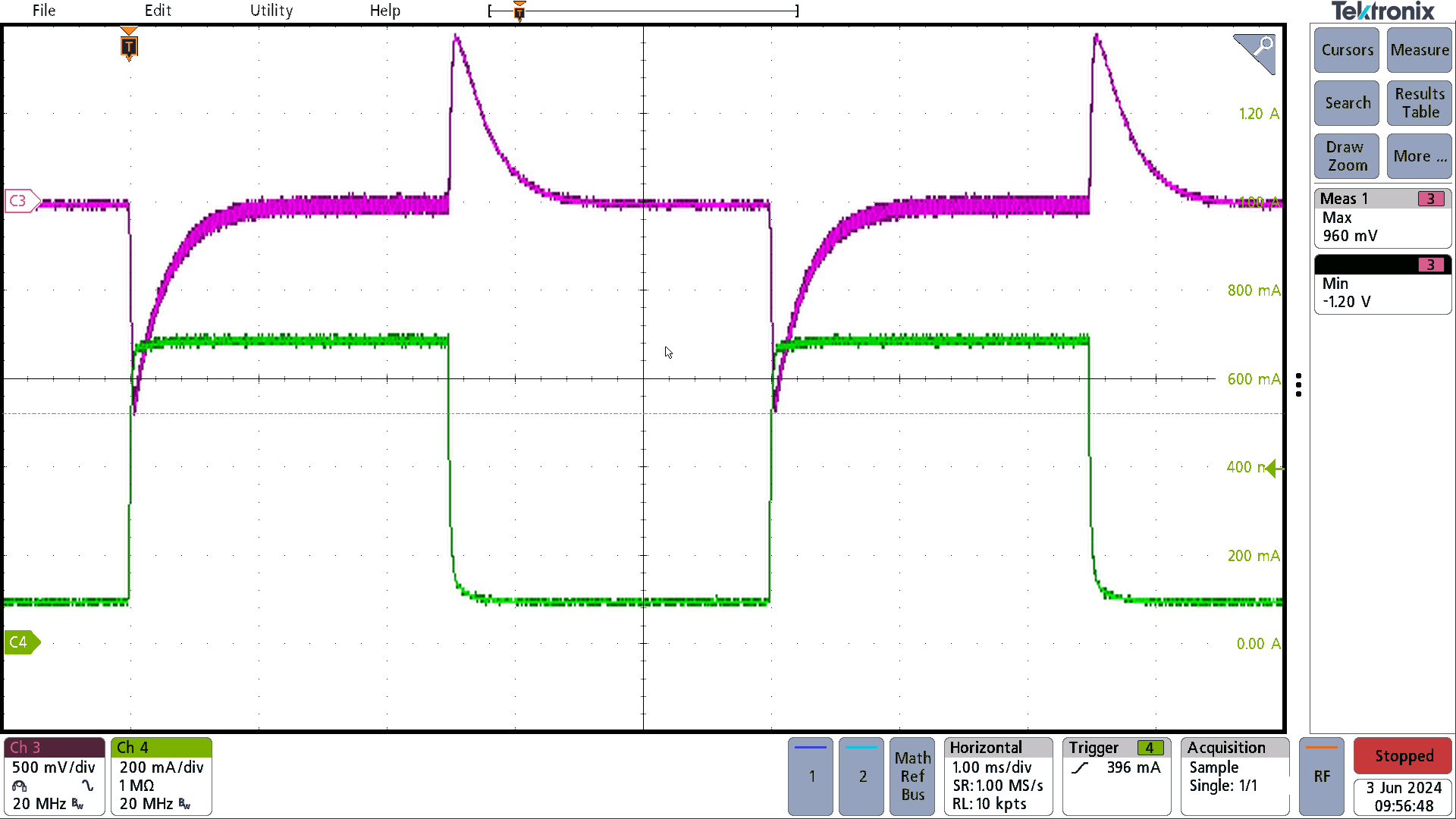TIDT396 June 2024
3.3 Load Transients
Load transient response of ISOM8110 versus optocoupler. Wider bandwidth of ISOM8110 provides improved transient performance with same output capacitance. Note the difference in scales for the output voltage: 200mV/div for the ISOM8110 and 500mV/div for the optocoupler.
 Figure 3-5 Load Transient Response With
ISOM8110
Figure 3-5 Load Transient Response With
ISOM8110100mA to 700mA load step, 250mA/us slew rate
CH3: Output voltage, AC coupled, 200mV/div, 20MHz bandwidth
CH4: Output current, 200mA/div, 20MHz bandwidth
Measured +192mV and -232mV
 Figure 3-6 Load Transient Response With
Optocoupler
Figure 3-6 Load Transient Response With
Optocoupler100mA to 700mA load step, 250mA/us slew rate
CH3: Output voltage, AC coupled, 200mV/div, 20MHz bandwidth
CH4: Output current, 500mA/div, 20MHz bandwidth
Measured +960mV and -1200mV